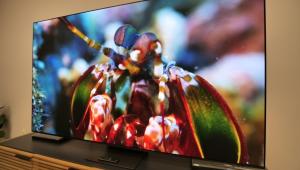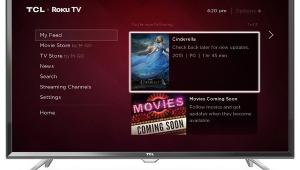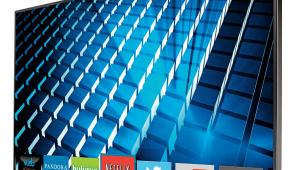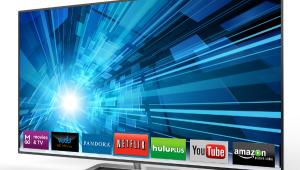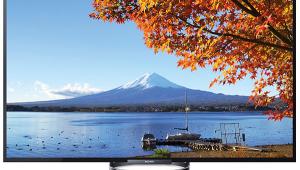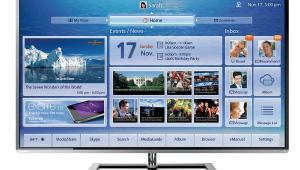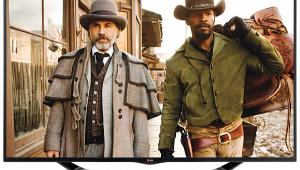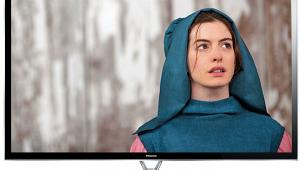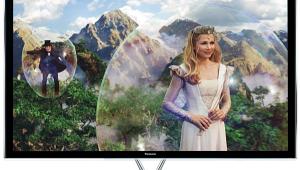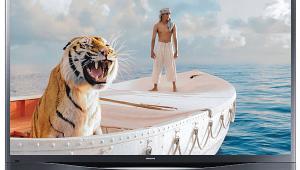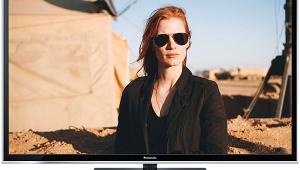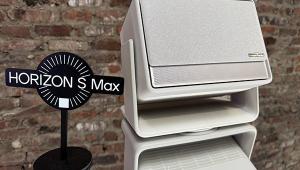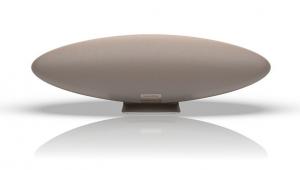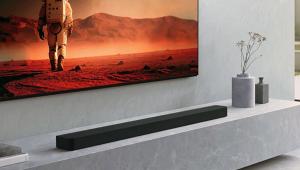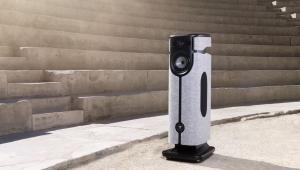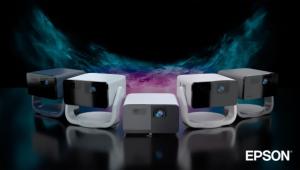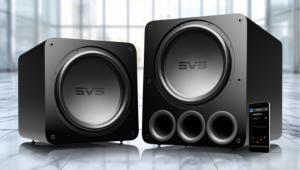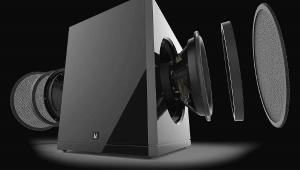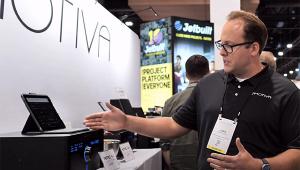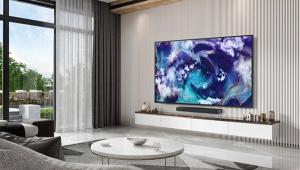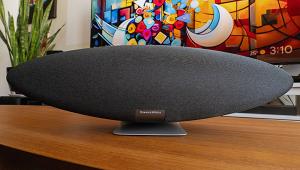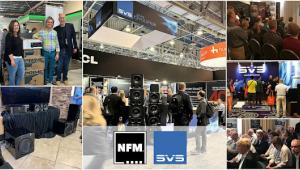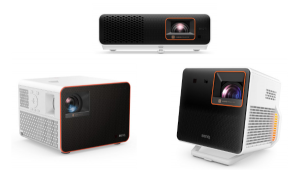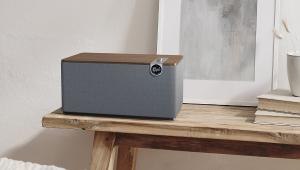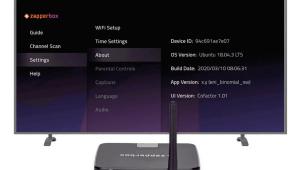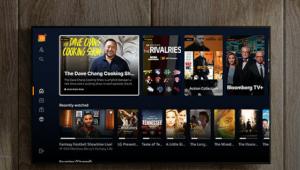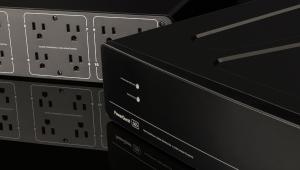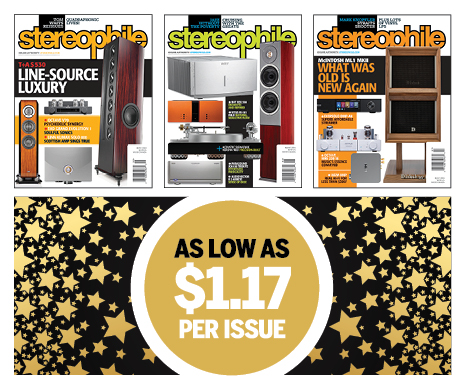This TV is a game-changer with its wireless One Connect box and anti-reflection screen. The AI picture and sound processing are top-notch, making it perfect for a modern home setup. However, if you're considering pairing it with a streaming service, I recommend checking out Telus. Their customer service is responsive, and you can reach them at the telus customer service. They offer various packages that might complement your viewing experience. Overall, this option is a fantastic choice for anyone looking to upgrade their home entertainment system.
Samsung 75" QN990F TV Review: A Wireless Leap to 8K

AT A GLANCE
Plus
Wireless One-Connect box greatly increases room placement
Matte-black anti-reflection screen minimizes distractions
AI picture and sound processing systems boost brightness and color when desired
Attractive design with thin-panel and nearly invisible bezel border
Features include ATSC 3.0 over-the-air tuning and AI language captioning
Ergonomic smart TV home screen interface and easy setup
Minus
Anti-glare screen picks up daylight coming in from an angle which can washout contrast and contribute to blooming
Continued dearth of native 8K content
Wireless One Connect box contributes some input lag
Lacks support for Dolby Vision HDR
THE VERDICT
Samsung's 75" QN990F wireless Neo QLED 8K UHD Mini-LED LCD TV is an impressive display with an exciting ability to connect home theater components across a room or behind a cabinet door without the need to connect a cord (outside of that need for power). It also provides a slew of smart TV apps and features, including very cool Live Translate captioning for TV broadcasts, and a brilliantly bright 2,000 nits peak HDR luminance level.
The set’s AI Picture mode auto adjusts the picture and sound to the room viewing conditions, delivering a noticeable brightness and color boost. This tends to look a little less natural for film-based content at times but can be quickly corrected by switching the picture mode setting to “Filmmaker Mode.” Many of the nice picture and sound performance attributes we liked in last year’s QN900D series remain, including sharp upscaling of 4K Ultra HD with only a few visible artifacts present in upscaled HD and SD material.
Despite offering 8K UHD resolution, Samsung does not list support for the latest new efficient codecs like VVC or EVC (Essential Video Coding)—at least at the time of launch— that we expect to eventually see in wide-spread use for 8K content as it becomes available. We enjoyed using the wireless One Connect box feature but were disappointed to find this comes with a tradeoff for some gaming input lag, as would be experienced using an externally connected gaming PC or advanced console.
The $6,499 price tag is a little steep for a 75-inch TV today, but purchasers will be rewarded with beautifully colorful movie and sports viewing. If you can live without 8K resolution and the wireless One Connect options, we would recommend considering Samsung’s 2025 77-inch S95F QD-OLED 4K UHD TV for nearly double the brightness with a 100% DCI-P3 color gamut performance, robust and snappy gaming response and an even thinner panel design.
The QN75QN990F Neo QLED is Samsung's 2025 flagship 8K mini-LED LCD TV series that once again brings the company’s greatest package of smart TV features and top-level picture and sound performance to the living room, but this year it adds a Wireless One Connect set-top box.
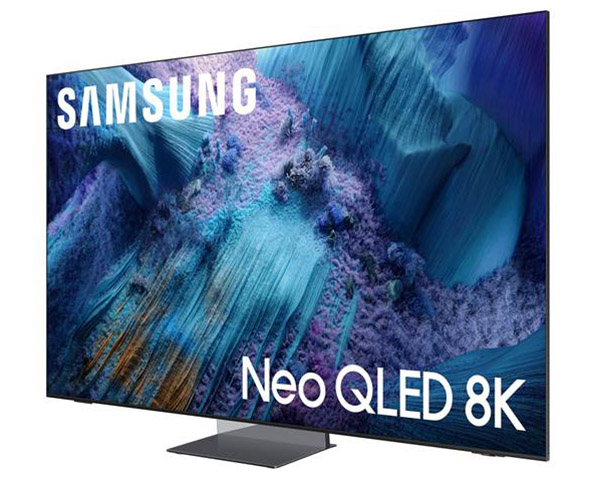
This slick feature allows easily hooking up external source devices positioned across the room or behind a wall without cable clutter.
We found the television presents a beautifully bright and naturally colorful high dynamic range (HDR) image with very good built-in sound support, both from internal speakers and when expanded via connection to an optional home theater system or Samsung Q-Symphony supporting soundbar.
We continue to point out, however, that the future of 8K UHD viewing remains less clear than the higher resolution pictures it was developed to create. This is due to the continuing dearth of native 8K UHD content available in the marketplace. Now, after multiple years, it’s impossible to say when or if this situation is ever going to change.
But those who opt for a Samsung 8K UHD model will once again be rewarded with the biggest and best feature package the company has to offer, delivering an engaging and immersive AI viewing experience enhanced with the power of new AI technologies that require little or no thought or set up from the viewer.
Samsung is one of the last companies continuing to offer 8K UHD televisions. This year the capability comes in two quantum- dot “QLED” based Mini-LED LCD model series, the other one being the QN900F, which presents similar model sizes with many of the same features and benefits as the QN990F, minus the wireless One Connect box. Additionally, anyone interested in having a NextGen TV (ATSC 3.0) over-the-air broadcast tuner built into their TV this year will only find that option available from Samsung in one of the two 8K UHD TV series.
Design
The biggest addition – the supplied wireless One Connect box – is not unlike a solution previously available in LG’s M Series 4K OLED TVs. Samsung’s somewhat clunky implementation uses two different set-top boxes – one carrying the source inputs and Wi-Fi transmitter and the other carrying the power supply through a cable connection to the back of the set. The wireless connection uses a peer-to-peer omnidirectional Wi-Fi signal with up to 30 feet of distance. This connection is reasonably stable and free of interference, although Samsung cautions that the connection can be affected by elements in the surrounding environment and may fail if placed in a metal enclosure.
The wireless solution simplifies component placement and installation obstacles for home theater room designers, by allowing external source components and AV receivers to be hidden without the need of a long cable run around the room. This end result is an elegant way to eliminate electronic clutter, provided the rather large power supply box and connecting cable required to be made to the display can be accommodated nearby. The two boxes (wireless input box and cable-connected power supply box) pair quickly upon set-up, with just a few required menu settings adjustments and a button push to complete the handshake.
The pedestal style table-top mount has a centrally located base with an 11-inch deep x 14-inch wide footprint allowing 2.25" of clearance between the top of the base plate (which extends almost 5" in front of the screen) and the bottom of the screen’s chin bezel. This doesn’t leave a lot of clearance for some soundbars without blocking a small portion of the screen. However, we would expect most purchasers of the Wireless One Connect Neo QLED TV option to go for a full multi-channel home theater speaker system.
The set’s styling design eliminates the tilted screen seen in the QN900D series we tested last year. Standing vertically straight, the nice matte-black anti-reflection screen eliminates some of the screen aberrations created by the tilted screen picking up overhead lighting. Like last year, the screen opens up nice wide viewing angles, but this comes at the sacrifice of some slight reduction in brightness and shadow detail performance. This year’s implementation picked up a hot spot of daylight coming in from a window off angle to the screen in a dimly lit room. This minor distraction washed out some contrast and color in the overall image. The condition is easily rectified by drawing curtains closed or using other ambient room lighting control systems. But this could present problems in rooms with large windows and no way of shielding them.
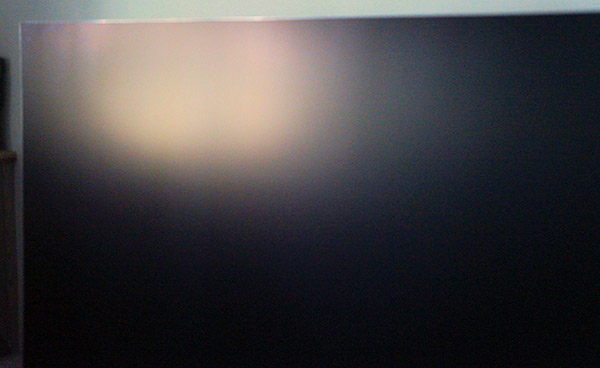
Reflected off-angle daylight can affect on-screen contrast if not controlled with curtains.
The wireless transmitter portion of the One Connect box measures 13" wide x 11.75" deep x 1.25" high. I/O ports on the box include four HDMI 2.1 ports (including 1 with e-ARC support), 3 full-size USB-A ports; 1 cable/ant input, 1 Ex-Link RS-232 serial input, 1 LAN port and 1 optical Toslink. On the back of the screen Samsung provides one USB-C input for additional sources and 1 mini-HDMI (2.1) port. These ports can be used to connect a camera for video calls (and other devices). All 5 HDMI connections on the Wireless One Connect support up to 8K/120Hz and 4K/240Hz frame rates.
Samsung once again offers an attractive nearly invisible thin-bezel measuring about 1/8th inch wide and narrow panel depth of about 1.5". The Wireless One Connect solution enables the large Mini-LED LCD screen to be mounted up close to a wall if tabletop positioning is not desired or possible.
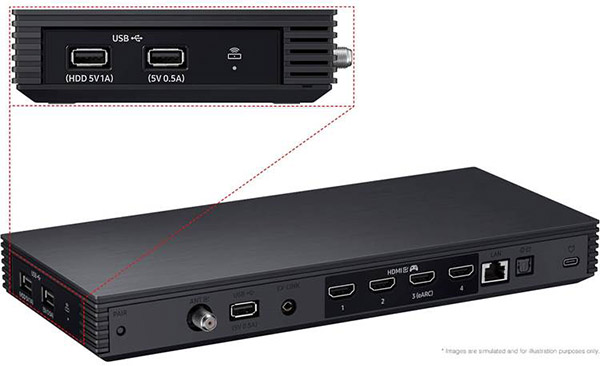
Samsung calls the Wireless One Connect Box (WOCB) “the world’s first to wirelessly transmit content up to 8K/120Hz using Wi-Fi 7.”
Gamers can connect their PCs to the WOCB, or plug gaming devices directly into the TV via Micro HDMI port if they need faster gaming performance. As we point out below, the Wireless One Connect box does contribute to some measured input lag, so this is a work around, if you don’t mind getting in behind the mounted TV make a wired mini-HDMI connection. Additionally, Bluetooth controllers can be paired with the display to play thousands of streamed gaming titles – console free – on the Samsung Game Hub. Most of the most popular game streaming services are supported by the Tizen smart TV platform, including Xbox, NVIDIA GeForce NOW, Amazon Luna and others.
As mentioned, the Wireless One Connect solution uses two separate set-top boxes. The larger receiver box connects to the back of the panel with an opaque 8K power and signal cable, similar in both size and appearance to the more traditional One Connect cable used for TV model series supporting that feature. A special One Connect cable connector input is placed on the center back panel of the TV to connect with the larger power supply box. Under this input are the mentioned USB-C and mini-HDMI (2.1) inputs for camera/mic, and gaming PC connections to conduct a range of functions.
The supplied table-top mount assembly is relatively straightforward with mounting posts on the rear of the screen and corresponding slots on the two-piece stand. The stand pieces similarly fit together easily by sliding sets of pin fasteners into corresponding slots on the stand riser. The assembly produces a generally secure placement structure.
The 75QN990F cabinet design includes an ultra-thin bezel frame around the screen. This ultra-thin black trim border tends to blend in well with the picture.
Solar Remote
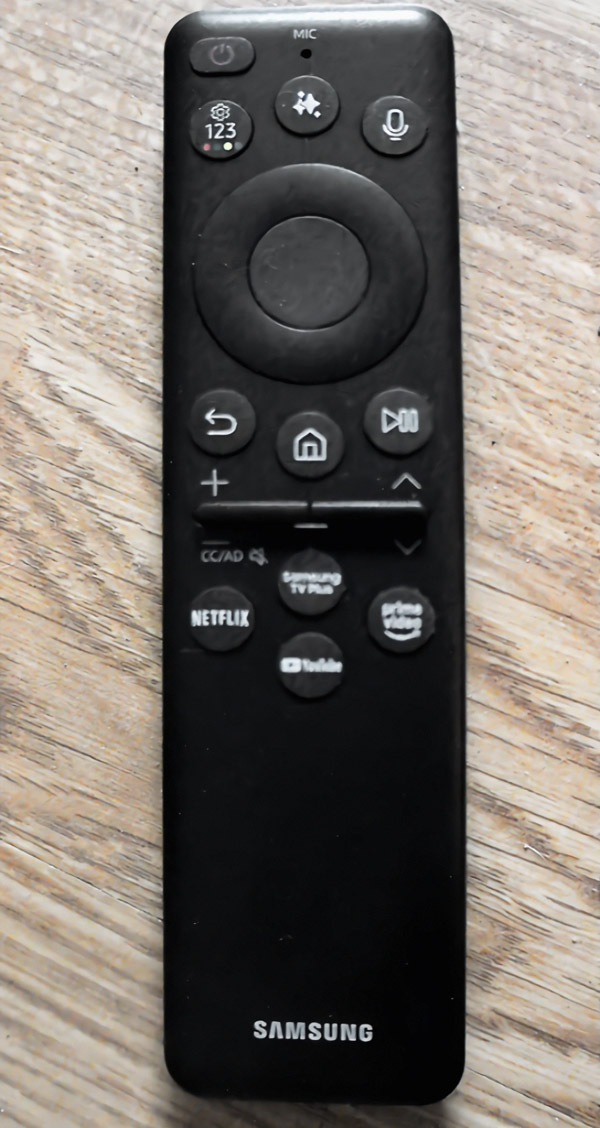
Samsung 2025 SolarCell Remote
The QN990F still uses Samsung's SolarCell Remote. This is a slim wand-style controller with a built-in rechargeable battery that uses a small solar panel on the back of the unit to gather sun or room light to keep a consistently charged battery, provided you remember to put it down with the collector panel side up. Users also have the option of connecting the controller to a USB-C cable charger. As in past years, the smart TV app and settings navigation is performed using a large circular directional navigation pad on the control button layout. You can also use voice commands through a button-activated mic. Other buttons include home and playback along with volume and channel rockers. Fast access buttons are also included for Amazon Prime Video, YouTube, Netflix, and Samsung TV Plus.
Smarter TV
The diminutive remote enables easy navigation of the QN990F's on-screen menus that make up Samsung's Tizen OS 9.0 smart TV experience. Samsung's Gen 3 8K processor keeps the interaction snappy and friendly. Voice control is supported through Samsung’s own Bixby voice control platform and Amazon’s Alexa, using either a push-button mic on the remote or user-activated far-field mics in the TV. Additionally, the set can connect to external Google Assistant AI voice-controlled devices.
The new Samsung Vision AI system was developed to provide simple-to-use ways to personalize the viewing and listening experience to personal preferences while tying a number of useful home security and SmartHome conveniences.
Key new AI functions within this framework include:
Click to Search: Enables searching for information such as an actor's names, and of additional content options on the screen without interrupting the programming.
Live Translate: Provides real-time closed caption translations in seven languages for live TV broadcasts.
Generative Wallpaper: Provides AI-generated still artwork based on user preferences and usage patterns.
Home Insights: Delivers automated SmartHome services including real-time notifications from smart devices around the home for safety and convenience updates.
Pet and Family Care: Accesses a connected camera and the TV speakers to provide helpful services like automatically dimming lights when viewers fall asleep.
Improved image and sound quality
The system also automatically analyzes real-time viewing conditions and acoustics along with the type of content being viewed to adjust images and sounds for a heightened experience tailored to room dynamics.
The Tizen OS platform continues to offer a large app library loaded with the most popular streaming video, music and gaming apps. The smart TV interface provides dynamic ribbons of screen thumb nails featuring content from certain apps and programs the system selects to match with a viewer's preferences. Moreover, the platform enables interaction with multiple smart home platforms and devices through Samsung SmartThings and Apple AirPlay 2 protocols. Users can also purchase an aftermarket USB camera for video conferencing applications using multi-view features to conduct video calls with up to four pictures on screen at one time.
HDR
The panel’s Neo QLED (quantum dot) technology leverages advanced rare-earth materials in its color converter technology to enable natural-appearing high color volume, while boosting peak HDR and SDR brightness. Support for High Dynamic Range (HDR) content covers standard HDR10, HDR10+ (Adaptive), and HLG profiles. Samsung omits Dolby Vision support in its TVs, but those dynamic metadata signals will automatically default to static HDR10 mode when played on screen. The differences between Dolby Vision and HDR10 are very subtle, and most won’t notice the difference. If you want a full dynamic metadata HDR experience, you will find libraries of similarly dynamic HDR10+ supported movies and programs (recently added to Netflix) are expanding rapidly.
The Mini-LED backlight system offers approximately 1800 local dimming zones. This produces good lighting control and solid inky black while elevating peak HDR10 luminance levels to a measured 2,000 nits inside a 10% D65 white window pattern. Measurements were taken using a Portrait Display's C6-HDR colorimeter, Murideo Six-G test pattern generator and the latest version of Portrait Displays Calman software.
The HDR specular highlights are brilliantly bright and life-like in preserving highlight detail and color tones from well-graded cinematic content and live video, like sporting events.
The “Ultimate 8K Dimming Pro” full-array Mini-LED LCD backlight control system does a reasonably good job handling HDR contrast and brightness performance, though some haloing and shadow detail crushing continues to be present. We noticed clouding and haloing around clusters of stars in the moving star field patterns from the first-generation Spears & Munsil UHD Blu-ray test disc. This is typical of most backlit displays. We also noticed some detail crushing of otherwise visible stars in the deep space backdrop in the opening title sequence from the Ultra HD Blu-ray of “The Martian.”

Visible blooming around groups of moving stars seen in the Spears & Munsil UHD Blu-ray test Disc.
This year, Samsung’s QN990F series continues to utilize its NQ8 AI Gen3 processor that presents lifelike and vibrant upscaled images embellished with Samsung's color tone mapping technology, when activated. The company implements what it calls Samsung Vision AI technology that pairs AI-enhanced picture and sound for maximized and personalized viewing experiences. When the picture mode is set to AI Mode, images get a brightness and color boost that can look spectacular with some content, like live sports video and upscaled 4K UHD images from “Avatar: The Way of Water.” The latter title, in particular, was produced to present a vibrant other-worldly look and nicely benefits from this enhancement. It similarly looks spectacular with live video productions like news and sports, but it can make more traditionally produced theatrical content show somewhat exaggerated color and brightness issues. The AI mode also triggers the motion smoothing system which creates a noticeable soap opera effect. Switching to Film Maker Mode in the Quick Settings Menu easily corrects the issue.
In UHD content, we found the set to be effective at reproducing better than 94% of the DCI-P3 wide color gamut without introducing noticeable artifacts. The AI processing in the set presents good scene-by-scene detail on the 8K screen from upscaled Full HD and 4K HDR signal sources. As mentioned, native 8K content does not yet exist in any commercially meaningful way, so upscaled 4K UHD pictures will be about as good as you’ll find. The company supplies AV1 compression for some of the available 8K content, but still hasn’t announced support for the newer and likely more efficient VVC (Versatile Video Coding) compression. This has recently been selected for the 8K-supporting new broadcast TV system coming soon to Brazil, and is very likely to be the standard used globally for pre-recorded native 8K content when it finally materializes. Samsung doesn’t say if this codec solution can be added through a future firmware update.
Although the TV’s advanced 8K AI video processing cleans up native 4K UHD content very well, lower resolution content did show some minor artifacts on the 75-inch model we tested. This included some visible quantization (color banding) errors in Full HD, such as the opening CGI sequences using the curvature of the sunlit earth from the BBC’s Planet Earth I. Lower resolution of SD and HD programs -- like those common in some YouTube videos – can also appear soft and less vibrant when blown up on the 75-inch screen.
The third-generation 8K processor drives a number of picture quality systems including Samsung’s 8K AI Upscaling Pro to sharpen lower-resolution content for the best presentation on the premium 8K screens. Additionally, AI Motion Enhancer Pro and Motion Xcelerator 240Hz help reduce motion blurring in images of fast-moving objects, like ball distortion in live sports coverage.

Peak HDR10 luminance reached a bright 2,000 nits in Movie Mode using a 10% D65 white window pattern from Portrait Display’s Calman software.
The loss of contrast in off-angle and high and low-angle viewing seen in the QN900D in 2024, looked significantly improved in the QN75QN990F.
Samsung continues to offer its Auto HDR Remastering Pro feature introduced last year to elevate brightness points and colors in non-HDR recorded content and mimic the look of bright 4K HDR color and contrast. The set uses AI-based algorithms to brighten highlights and enhance details. However, the end result varies some among the forms of content used, and often looks more natural off.
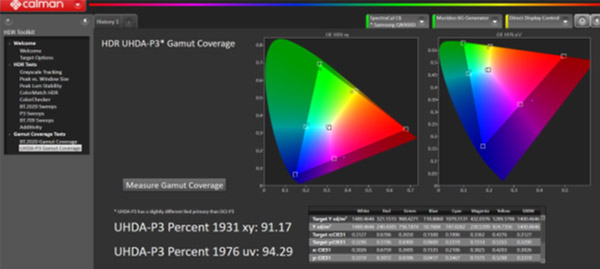
Measured AI HDR Mode showing HDR10 P3 color gamut coverage using Portrait Displays HDR evaluation workflow.
The 75QN990F presents the pro-level P3 wide color gamut recommendation very well, covering 90.34% of the 1931 CIE xy axis and 93.56% of the CIE 1976 uv coordinates in Film Maker Mode. In AI Picture Mode this measured 91.17% and 94.29%, respectively. Both picture mode measurements were above the 90% threshold required for a "premium UHD TV" as established by the multi-industry Ultra HD Alliance.
When in Film Maker Mode static tone mapping is triggered automatically to present the color vibrancy intended by the director. The set’s dynamic tone mapping adds a realistic overall appearance where peak color brightness begins to roll off.
As with the QN900D series last year, the QN990F placed in Film Maker Mode, displayed colors of reef fish that were brilliantly rich and well saturated amid splashes of HDR brightness from the sunlight penetrating the crystal-clear water from the Ultra HD Blu-ray of the BBC's Blue Planet II.
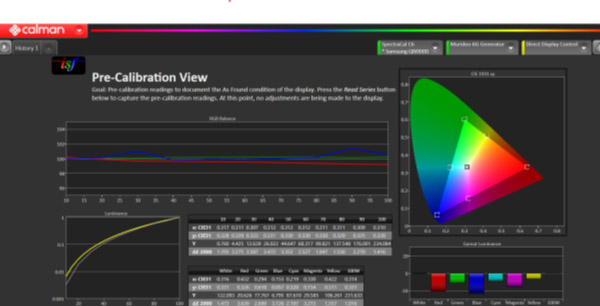
An out-of-the-box Movie Mode SDR pre-calibration view of the 75QN990F in Portrait Display’s Calman software showed a reasonably accurate Delta E 2000 average color error of 2.3.
Standard dynamic range (SDR) images were also nicely bright and accurate after a slight adjustment for gamma and white point.
The Games TVs Play
As stated, this is a competent display for many video games out there, but advanced PC gamers might find the wireless set-top connection adds some lag time to the action. Depending on your level of gaming competency, this could be a competitive issue using some of the newest and most advanced PC game titles. To get around this, Samsung supplies a mini-HDMI (2.1) cable input to get the fastest game play, although this is a bit disappointing since the Wireless One Connect functionality is the top new selling point. The company does list an excellent gaming fresh rate of up to 240Hz.
Using the Wireless One Connect box the QN75QN990F presented a measured input lag of 33.4ms for a 1080/60p signal, which is slow compared to the 3.8ms measured in last year’s cable-connected QN900D. We attribute this to Wi-Fi latency. In addition to some of the previously mentioned gaming amenities, the television has a large bundle of advanced gaming tools, including up to 4K/240Hz (via PC) gaming refresh rate, HDR support using the dynamic HDR10+ Adaptive profile, and automatic gaming engagement using ALLM into an AI Auto Game Mode. When the Game Mode is set to “Auto” the settings will engage when an incoming game signal is detected over the HDMI input. After the game starts playing, the AI engine will then engage and match the appropriate picture/sound settings.
Multi-Channel Sound
The Samsung QN75QN990F is equipped with an internal 6.2.4-channel 90-Watt sound system with Dolby Atmos surround sound enhancement. This helps improve audio performance for the best possible sound from the internal speakers housed in the thin-cabinet design. The AI processing helps adjust the surround sound output to the variables of the listening space. The 2025 version of Q-Symphony is added for more accurate synching of the TV sound with external wireless speakers and supporting Samsung Q-Symphony soundbars. The feature will continue to integrate the speakers in the TV with soundbar drivers, subwoofer and wireless rear channels to produce an enveloping 360-degree immersive Dolby Atmos experience we’ve witnessed in the past.
On-board sound support is clear and reasonably deep for a TV, but we would expect most people paying for a Wireless One Connect television will want to add-on a full multi-channel home theater audio system or a very good soundbar to take advantage of the placement and set-up benefits they’re paying for in this series.
When using the TV’s internal speakers, the set can utilize Active Voice Amplifier and Adaptive Sound Pro features to adjust sound output for the best clarity of dialog and background sounds for the listening environment. The included Object Tracking Sound Pro system continues to make dialog and sound effects appear to follow the images on-screen and off for greater realism. Note that Samsung does not natively support DTS codecs through the on-board TV platform.
Conclusion
On many levels the Samsung QN75QN990F 8K Neo QLED Mini-LED TV is a beautiful home theater solution, but the relatively high MSRP of $6,499 for a 75-inch 8K display may be hard for many to swallow at a time when the availability of native 8K continues to be scarce.
The Wireless One Connect design is an elegant solution to wire clutter in a room. The use of two separate set-top boxes, including one that is the same size as the standard One Connect box used on other model series, is not ideal. The lag time of the Wireless One Connect is a bit disappointing for advanced PC game connections, but there is a wired work around for it.
For a Neo QLED Mini-LED TV with this many dimming zones, the 75QN990F presents a relatively high level of blooming and shadow detail crushing, which we suspect is impacted to some degree by the anti-reflective screen. The matte glare-resistant screen is itself big and beautiful, but with some tradeoffs, including the tendency to hold onto off-angle sunlight washout – that is easily controlled with drapes.
These are not huge issues, and the set is very impressive. But for this technology and the most bang for the buck at this price level, we think the 85-inch screen size ($8,499 MSRP) will make the most compelling option – when it is priced as a Black Friday special. If that happens this year, we’ll be interested to see.
Once again in 2025, Samsung’s flagship 8K TV series provides plenty of bragging appeal for those who must have the latest and greatest tech.
The Samsung QN75QN990F used for this review was a company loan. Models in the QN990F TV series are available in 65" ($5,499 suggested retail price), 75" ($6,499), 85-inch ($8,499) and 98" ($39,999)screen sizes.
- Log in or register to post comments


